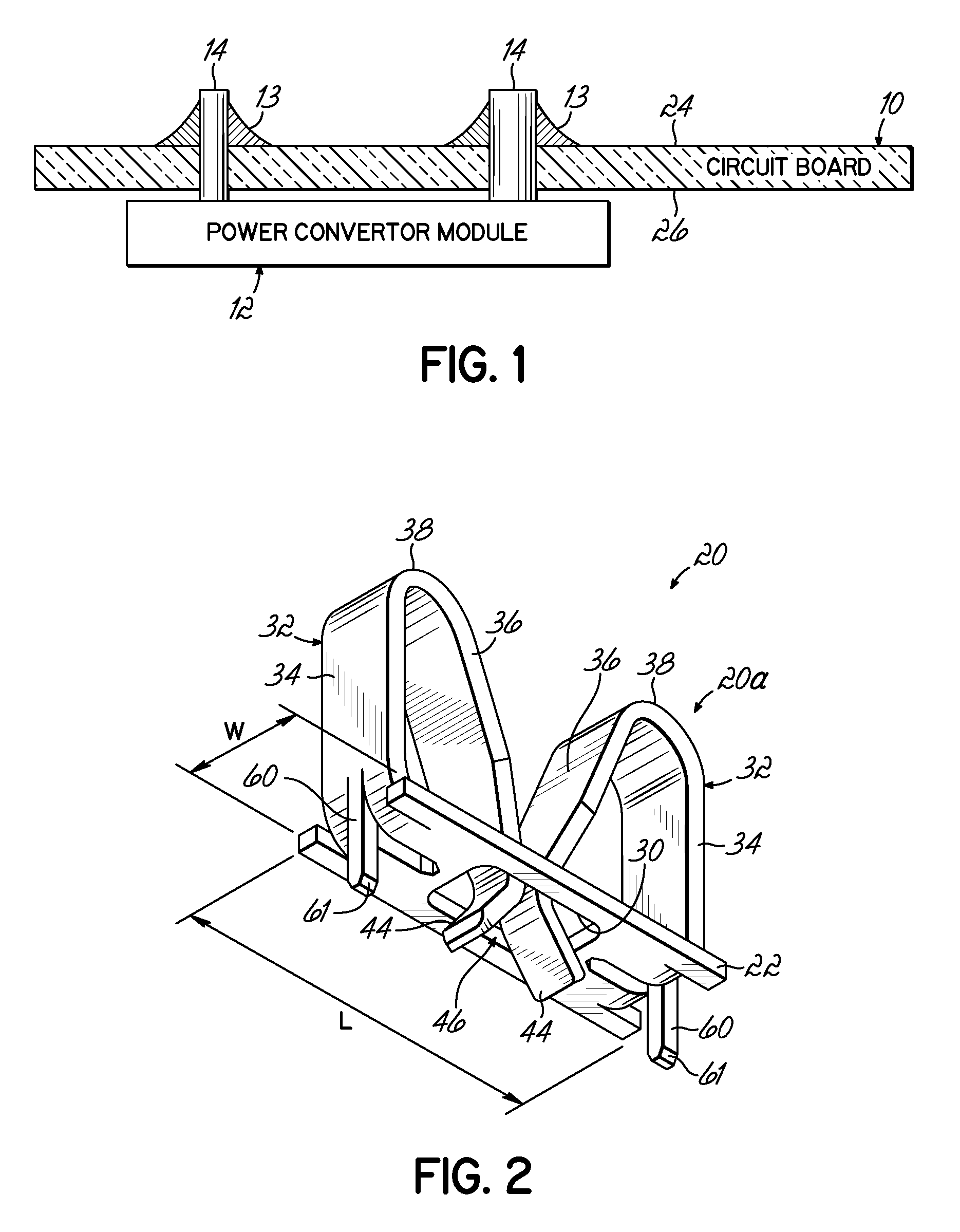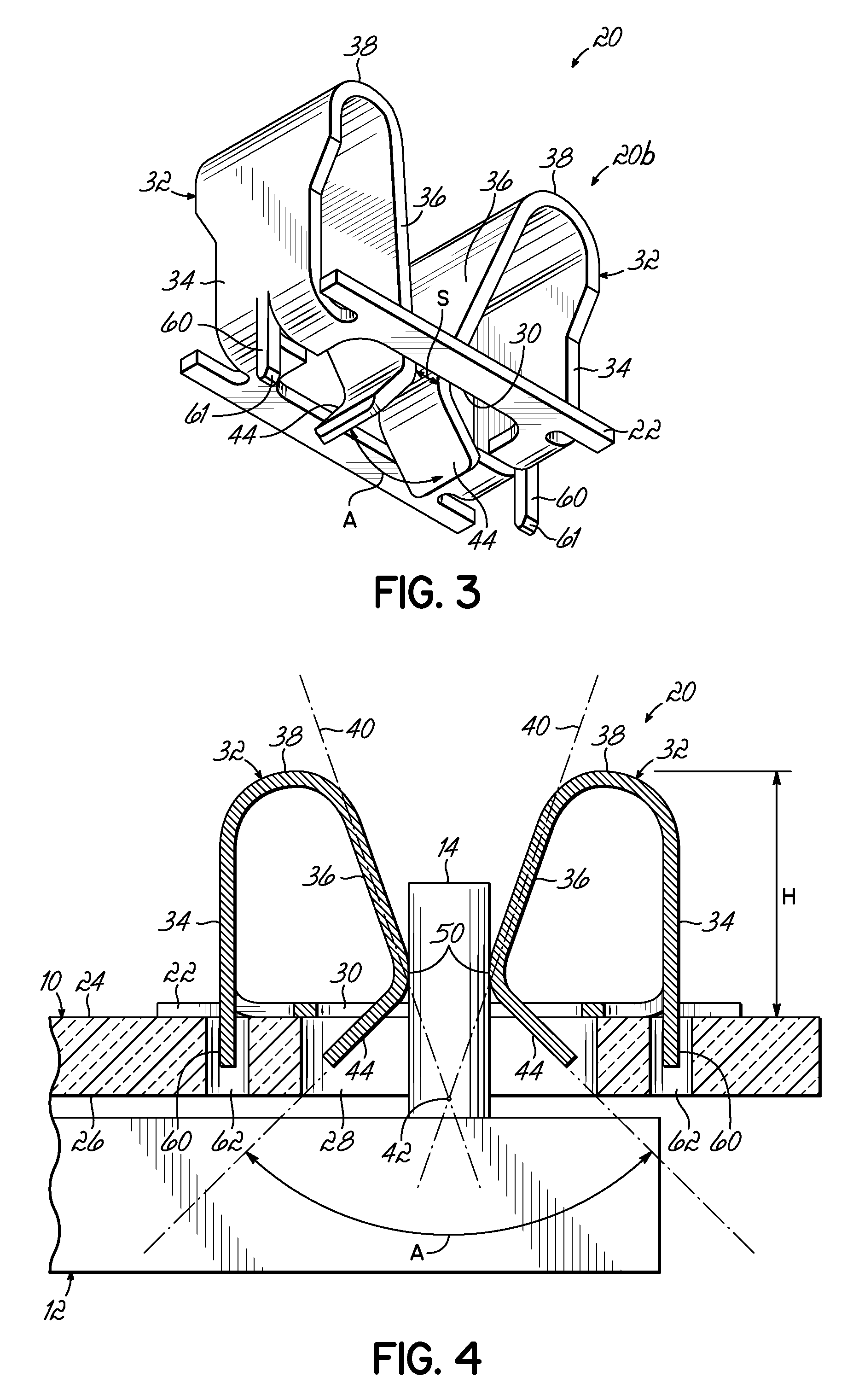Bottom entry interconnection element for connecting components to a circuit board
a technology of interconnection elements and components, which is applied in the direction of coupling contact members, fixed connections, coupling device connections, etc., can solve the problems of inefficiency in board fabrication and manufacturing, the amount of space that each board occupies, and the increase of costs
- Summary
- Abstract
- Description
- Claims
- Application Information
AI Technical Summary
Problems solved by technology
Method used
Image
Examples
Embodiment Construction
[0023]The present invention can address various drawbacks in the prior art as noted above, and provides an interconnection element or socket to couple a component to a circuit board. It provides a robust mechanical and electrical connection between a circuit board and one or more components or modules, such as a power converter module. The interconnection element provides both surface-mount technology (SMT) and through-hole attachment techniques, thus, providing a robust physical attachment as well as a robust electrical connection between the board and component. The interconnection elements are discrete to adapt to various different component lead or pin arrangements, and do not require precise pin alignment with the interconnection element.
[0024]The present invention provides a top side interconnection element that is configured to receive pins or leads from components inserted on the bottom side of a circuit board. The invention is configured for automated surface-mount technolo...
PUM
 Login to View More
Login to View More Abstract
Description
Claims
Application Information
 Login to View More
Login to View More - R&D
- Intellectual Property
- Life Sciences
- Materials
- Tech Scout
- Unparalleled Data Quality
- Higher Quality Content
- 60% Fewer Hallucinations
Browse by: Latest US Patents, China's latest patents, Technical Efficacy Thesaurus, Application Domain, Technology Topic, Popular Technical Reports.
© 2025 PatSnap. All rights reserved.Legal|Privacy policy|Modern Slavery Act Transparency Statement|Sitemap|About US| Contact US: help@patsnap.com



